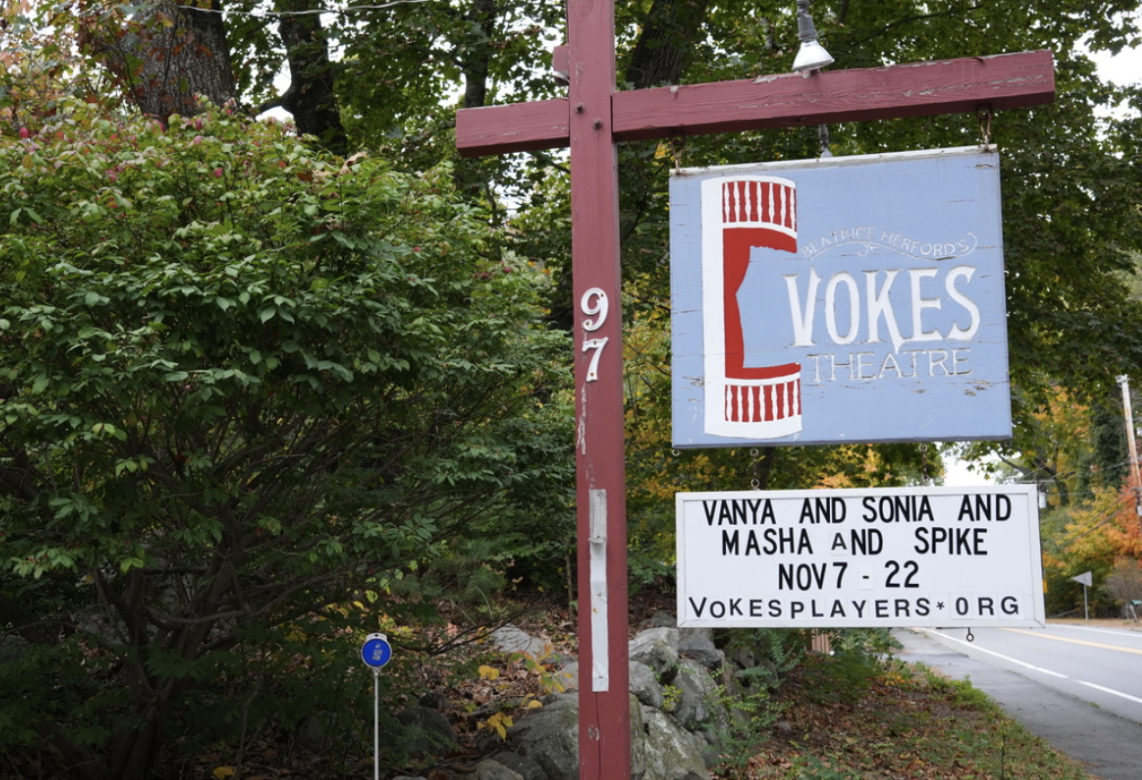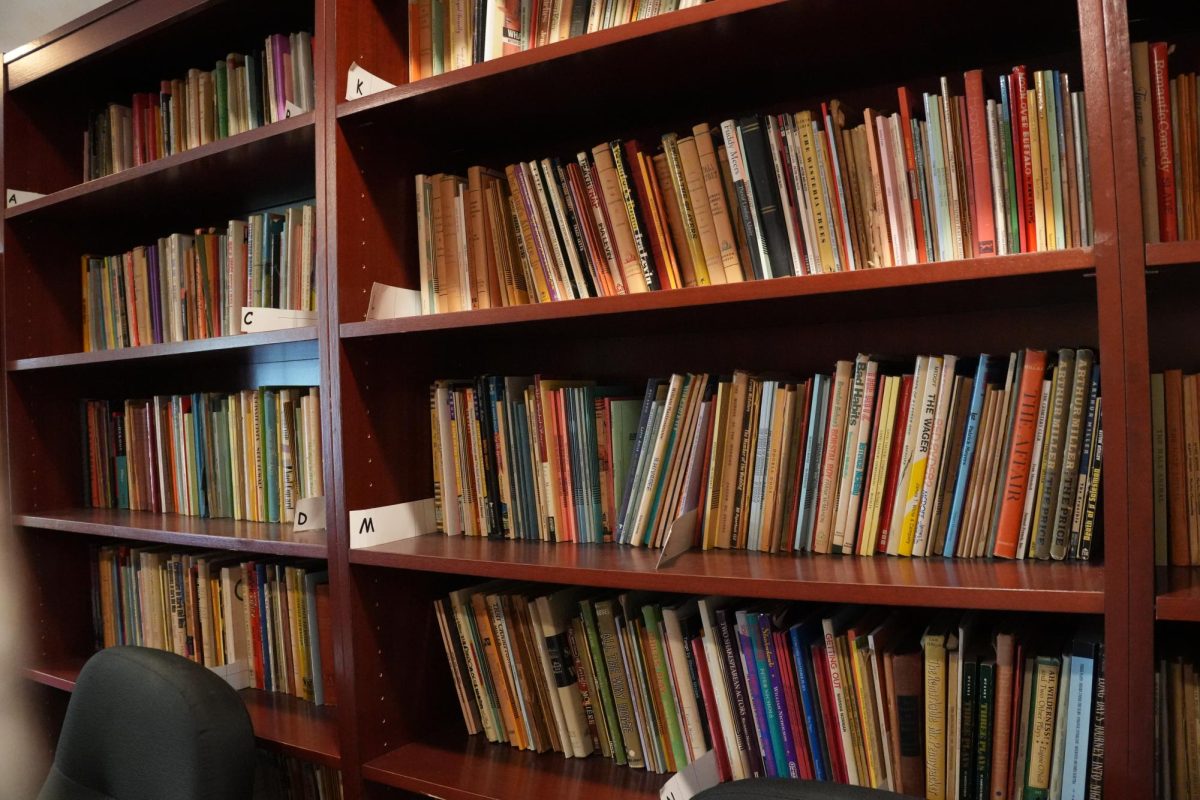Tucked away on Boston Post Road, Vokes Theatre is easy to miss and most people do. This 100 year old theater isn’t lit up by neon signs or flashy lights, yet its stage comes to life four times a year for shows, run solely by volunteers.
The Vokes Theatre was first built in 1904 by actress Beatrice Herford, and it was originally designed as a space for her to give monologues. Herford was a famous actress known for putting on one woman shows in the late 1800s and early 1900s. In 1895, Herford married a man from Wayland named Sidney Hayward and retired from acting. The theater, built on her Wayland property, was a way for Herford to continue to share her talent with her close friends, even after her retirement.
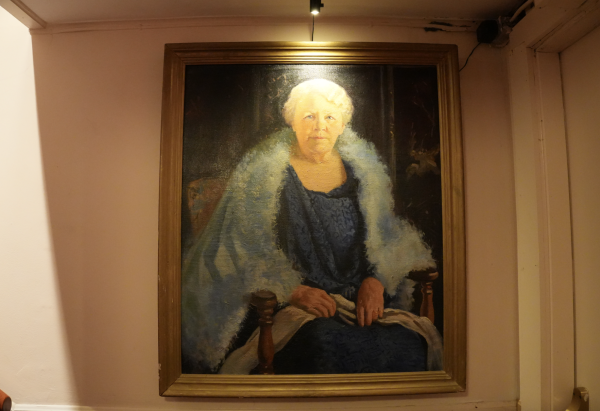
“Her friends were people, like Ethel Barrymore, the movie star, and when they would come to town, she would do a show,” Vokes Players Board of Directors President John Barrett said.
The theater’s design took inspiration from the Victorian opera houses in London, where Herford would perform. However, Herford’s theater in Wayland was much smaller, only holding 90 people, as opposed to the 135 it can accommodate now. Herford named the theater after Rosina Vokes, both an English actress and friend of hers.
“She would continue to do her shows privately for her friends, [and] that’s why the theater is so small,” Barrett said. “That’s why people in town may not have seen it, because it’s almost literally a dollhouse.”
In 1937, a group of local amateurs living in Wayland asked Herford if they could do a play in her space. She granted them access, and eventually, after many plays, the group took on the name “The Vokes,” being named after the theater. This decision was a form of gratitude for the band’s usage of the theater. Herford ended up selling the theater to The Vokes for a single dollar, wanting someone else to continue performing in her space. After that, Herford attended every opening night that was held in the theater.
“What I think is the coolest thing about [Herford] is that she’s hanging around with movie stars and playwrights, and this group of amateurs said, ‘Can we use the place?’ And she said, ‘Yeah, it’s a theater sure, do a show,’” Barrett said.
Since 1937, the theater has been run solely by volunteers, who keep up the maintenance and put on the shows. Some of the volunteers, like lighting designer Dan Clawson, have been a part of the theater their whole life. Clawson essentially “grew up” in the theater, with both of his parents doing shows when he was young. According to Clawson, the Vokes Theatre was where he found his passion for lighting as a teenager, setting the stage for his career. Clawson recently retired as the vice president of a theatrical lighting design company.
“I did my first ever lighting design in this theater, right after high school, it was my career for 40 years,” Clawson said. “I’ve worked here on and off ever since [high school].”
The volunteers put on four shows a year, hiring a different director for each show. Each show consists of a set designer, a costume designer and a lighting designer.
“Sometimes we really want a director, and we’re willing to let that director do something that we think will fit with our season, but sometimes there’s a play we really want to do, and we announce it to see who wants to direct it,” Barrett said. ”It’s a little bit like an audition process, the committee asks for interest, and people who apply come in and have an interview, and they describe how they plan to put on the play.”
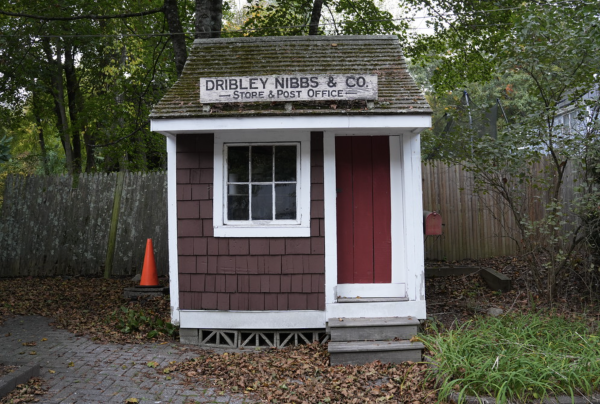
The hired director manages most of the show, including the cast and set design. Barrett emphasizes that the auditions for each play are open to anyone, meaning there is no set of actors that perform in every show.
“The only instruction we give to directors that we hire is to put on the best show you can, so there are no limitations on who to cast,” Barrett said. “I don’t think we’ve ever done a show where there hasn’t been somebody new in it, it’s always sort of a combination of new people and people that the audience may have seen before.”
The time between when the cast is announced and opening night is about six weeks. According to Barrett, the production rehearses about four times a week, depending on people’s schedules.
“Because it’s volunteer, everybody has day jobs,” Barrett said. “We rehearse in the evenings, and [because of] families and everything, people can’t be there every night of the week.”
Barrett now works as a theatrical teacher at Curry College in Milton, MA, also working as the Technical Director for Curry Theatre productions. Along with those occupations, Barrett has both acted and directed in many shows at the Vokes Theatre.
“Actors come from a long way away to be in plays at Vokes, and like anything else, you want to be out there with the best people,” Barrett said. “When you get cast in a show, and you’ve got the part, you start asking yourself, ‘What is this person going through?’”
The main thing about the Vokes Theatre that differentiates it from other performing spaces is how small it is. According to Barrett, the director has to be cautious about aspects like props or makeup, with the first row of audience members being a foot away from the stage.
“When I was [acting] professionally, you had to make sure that your voice reached the 45th row, that is a consideration that you don’t have at Vokes,” Barrett said. “There are limitations to how much you can do with makeup, [because] in many places, the first row might be 15 feet from the stage, and in that case, you could probably age somebody 20 years with makeup, which is really hard to do at Vokes.”
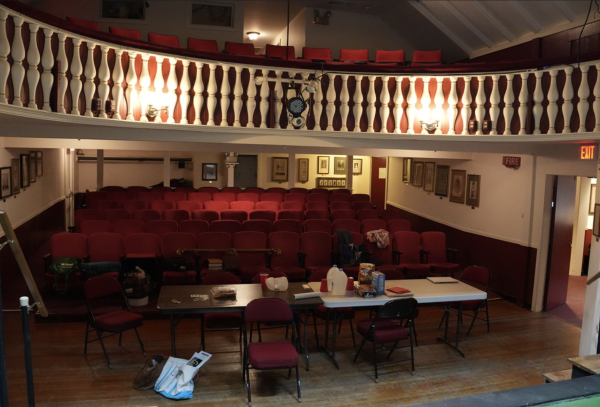
“How long it takes to [make] costumes varies wildly, depending upon if we can go down to Kmart and buy this, or if we have to go out and get a bunch of material and make a dress pattern and cotton,” Barrett said.
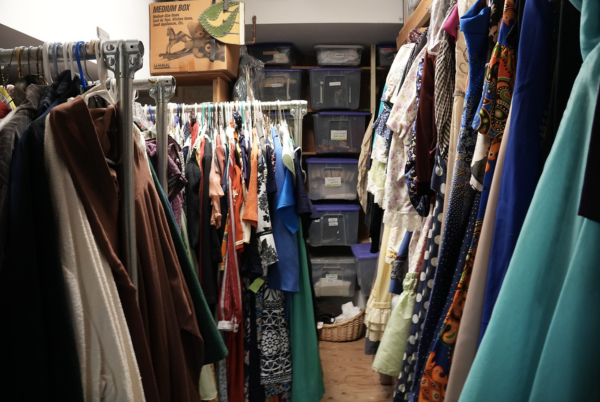
The team gets some props and costumes from used clothing and furniture stores, along with making specific items themselves. After each production, props and costumes are saved and stored in the basement under the theater to be used again.
“The first thing that [the designers] do is check down here to see what we have in the basement,” producer of the current production Tara Stepanian said. “That way we avoid getting new things.”
Along with costumes and set design, lighting is another key aspect of the decision making process that contributes to the overall quality of the shows.
“We have what’s known as a repertory plot that stays up all the time that we’ve developed over the years,” Clawson said. “The lighting designer looks at the set design and decides what they want to add on top of that, so we don’t often change the base plot, because the size and shape of the stage doesn’t change.”
Currently, the theater is rehearsing for “Vanya and Sonia and Masha and Spike,” which is a comedy play written by Christopher Durang. The opening night for this show is on Nov. 7.
The effort the volunteers put in to preserve the Vokes legacy shows no sign of stopping, embodying the “Show Must Go On” show business spirit.
“People [in the theater] come and go, some people move on, other new people move in, but, we’re closing in on 100 years, and we plan on another 100 years,” Barrett said


